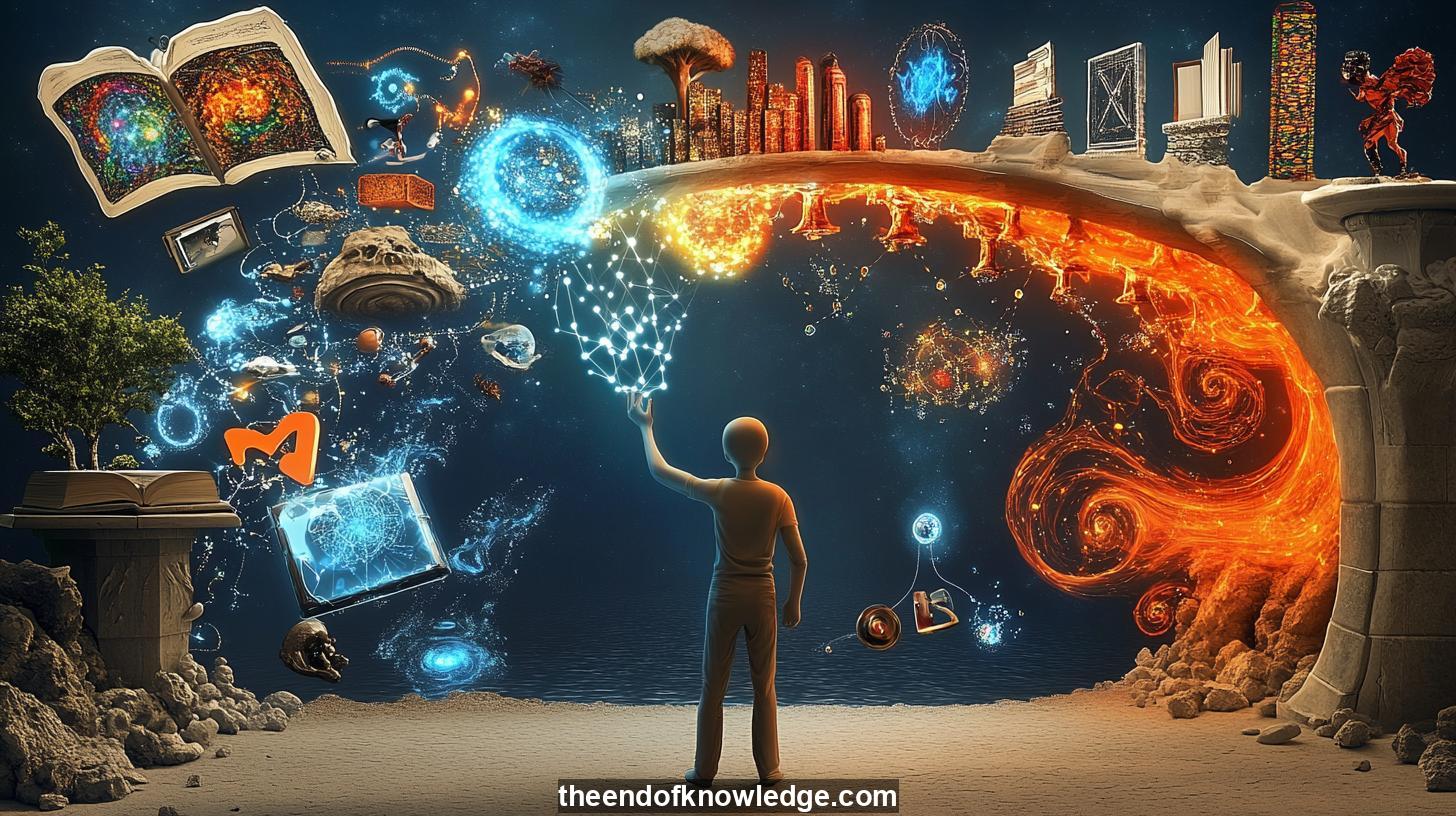 >
>
Concept Graph, Resume & KeyIdeas using DeepSeek R1 :
Resume:
discusses the intersection of creativity and artificial intelligence, focusing on how AI is reshaping artistic expression and problem-solving. It highlights the evolution of AI systems, from basic models to advanced generative systems like Stable Diffusion, which can create complex images and art. The discussion emphasizes the role of human creativity in guiding AI, ensuring ethical use, and addressing concerns about job displacement. also explores the future of AI, suggesting it could complement human creativity rather than replace it, leading to new forms of art and innovation.30 Key Ideas:
1.- discusses the intersection of creativity and artificial intelligence, focusing on how AI is reshaping artistic expression and problem-solving.
2.- It highlights the evolution of AI systems, from basic models to advanced generative systems like Stable Diffusion, which can create complex images and art.
3.- The discussion emphasizes the role of human creativity in guiding AI, ensuring ethical use, and addressing concerns about job displacement.
4.- explores the future of AI, suggesting it could complement human creativity rather than replace it, leading to new forms of art and innovation.
5.- It delves into the philosophical implications of AI-generated art, questioning whether machines can truly create or merely imitate.
6.- argues that while AI can process data and generate patterns, human creativity involves emotions, intent, and context, which machines lack.
7.- It suggests that the value of AI lies in its ability to augment human creativity, offering new tools for artists and problem solvers.
8.- The discussion touches on the ethical considerations of AI, such as the potential for misuse, bias in training data, and the need for accountability.
9.- It emphasizes the importance of designing AI systems that align with human values and promote positive outcomes.
10.- envisions a future where humans and AI collaborate, leading to unprecedented advancements in art, science, and technology.
11.- It reflects on the broader societal impact of AI, including its potential to democratize creativity and provide new opportunities for individuals.
12.- acknowledges the challenges of ensuring that AI development remains inclusive and equitable.
13.- By exploring these themes, provides a comprehensive view of the evolving relationship between creativity and artificial intelligence.
14.- ultimately argues that the integration of AI into creative processes is not a replacement for human ingenuity but a tool to enhance it.
15.- It calls for a balanced approach that leverages the strengths of both humans and machines to foster innovation and progress.
16.- highlights the importance of human oversight in AI development to ensure ethical and responsible use.
17.- It discusses the potential for AI to revolutionize industries such as music, film, and visual arts by generating new content.
18.- explores the concept of "space latently," referring to the vast, unexplored creative possibilities enabled by AI.
19.- It examines the role of memory and experience in human creativity and how AI systems can simulate or complement these processes.
20.- reflects on the historical development of AI, from early models to modern systems capable of generating sophisticated art and music.
21.- It considers the economic implications of AI-generated content, including its impact on traditional creative industries.
22.- discusses the potential for AI to create personalized art and media tailored to individual preferences.
23.- It raises questions about authorship and ownership in AI-generated works, challenging traditional notions of creativity.
24.- explores the educational potential of AI, enabling people to explore creativity without formal training.
25.- It addresses the need for public awareness and education about AI's capabilities and limitations to avoid misconceptions.
26.- emphasizes the importance of interdisciplinary collaboration in AI development, involving artists, ethicists, and scientists.
27.- It discusses the potential for AI to assist in solving complex problems, such as climate change, by generating innovative solutions.
28.- reflects on the psychological impact of AI on human creativity, including both inspirational and inhibitory effects.
29.- It considers the global implications of AI, including its potential to bridge cultural divides through shared creative experiences.
30.- concludes by urging a proactive approach to AI development, ensuring it serves as a tool for human empowerment and creativity.
Interviews by Plácido Doménech Espí & Guests - Knowledge Vault built byDavid Vivancos 2025